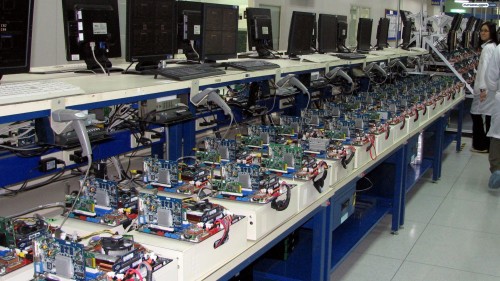
I remember when I still had my Palm Pilot PDA. I thought it was a fantastic little device that let me organize my calendar, my contacts, my to-do list and the rest of it, but the problem was that I had to manually sync up the data with my desktop computer each day. Nothing was automatic, as great as the PDA may have been as a productivity tool.
These days, my smartphone is linked up with all sorts of different cloud services. Every time that I take a picture with my phone, that photo is automatically uploaded to Dropbox and my computer then automatically downloads that photo as a local copy. I don’t have to do any of it myself. Similarly, my phone is synchronized with Google, so any change I make to my contacts or calendar are automatically made to the cloud side of it. This way, if I check my Google Calendar from any computer in the world, I’ll have the most up to date version of my schedule. And if I make a change to an event where other people are involved, they can get an automatic notification too.
The kind of process automation can and should be scaled up to accommodate small business and large corporations alike. When I paid a visit to the Kingston factory a few years ago, I got to have a close look at their production line and how each “cog” fit into the bigger “machine.” The same can be said about the different departments, employees and units within a company.
In order to best streamline these kinds of business processes, all the data and systems should be connected and integrated with one another. It seems so unnecessary for the HR manager to request an expense report from accounting and wait for that information to come back to them. If the associated information is reasonably integrated and connected, it means that all the data becomes a dynamic part of the overall business process. If the CRM software changes the contact name for a client, that information can automatically flow through to the billing department.
It needs to be integrated and it needs to be seamless. This way, every employee from every department can be on the same page without some sort of strange asynchronous connection where one person has one set of information and the other employee has another set. When any task in the process is completed, all parties involved can be notified so they can move on to the next task in the workflow. This drastically improves overall productivity and reduces unneeded waiting time.
Of course, transitioning to this kind of integrated solution can be quite complex and that’s why companies should consider custom solutions like the Progression Workflow Automation by idatix. They empower organizations to handle their daily operations via a cloud-based solution. Paperwork can be replaced by synchronized electronic forms. Processes can be standardized and automated. Work can be routed based on role, prioritizing the tasks that need the most attention.
At the end of the day, it means that employees can get more done and get it done more quickly. They’re not bogged down by the process and can focus on what they should actually be doing… just like how I don’t have to waste time synchronizing the calendar on my PDA with my desktop software anymore. It just happens for me.

